

Roman Colosseum
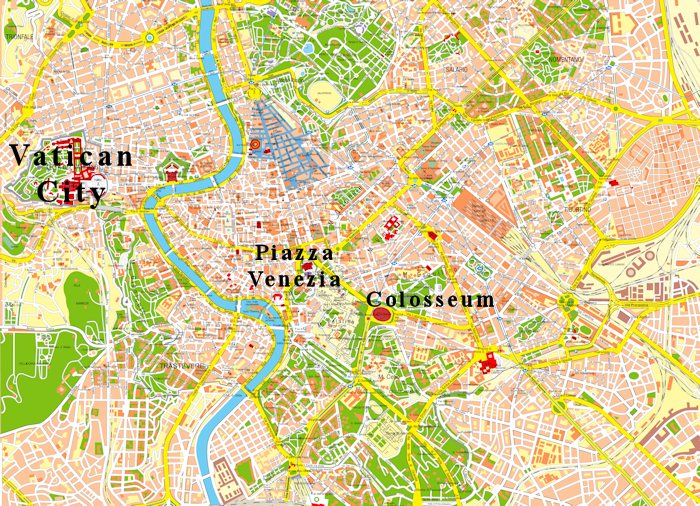
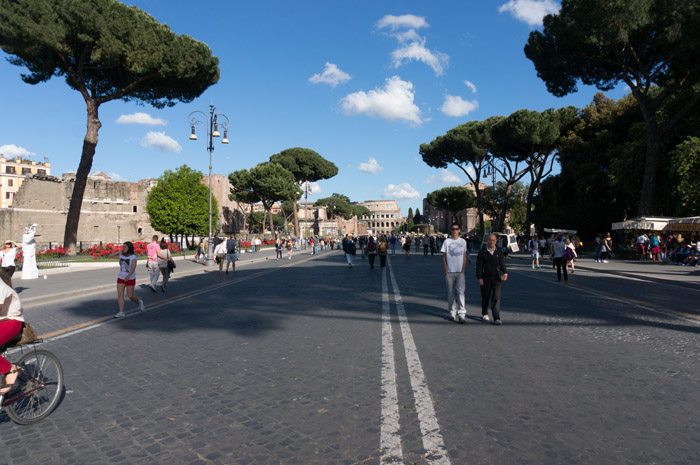
The main road leading to the Colosseum is closed on Sundays
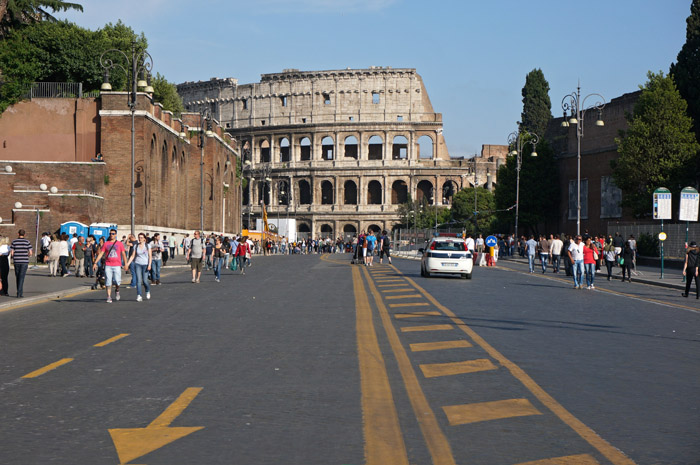
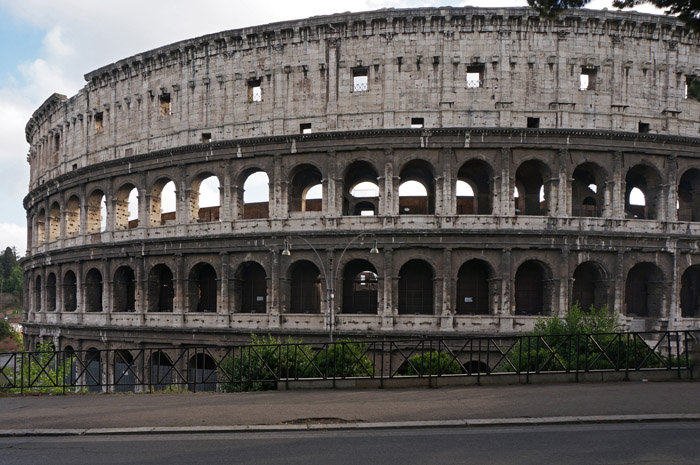
"The Colosseum, begun by [emperor] Vespasian and
finished by his son [emperor] Domitian, is a fitting symbol of that grandeur.
It set new records for the time, measuring 188 meters by 156, with a
circumference of 527; the height of the outer wall was 48 meters, and a further
story made of wood could be added; some 50 - 80,000 spectators could be
accommodated around the vast internal arena of 80 by 54 meters. Its name
came from the Colossus, as statue of [emperor] Nero, over 30 meters high,
depicted as the sun god. The Colossus was eventually taken down but
its name remained in the Colosseum -- itself a colossus of a kind.
Throughout the Empire, there were numerous huge amphitheaters: at Italica in
Spain (156 by 154 meters); and a whole series in France: Autun, 154 by 130;
Poitiers, 138 by 115; Limoges, 137 by 113; Arles, 136 by 108; Tours, 135 by 120;
Bordeaux, 132 by 103; Nimes, 131 by 100."
-- from Memory and the Mediterranean by Fernand
Braudel, Vantage Books - Random House, Inc. New York, 2002, page 306.
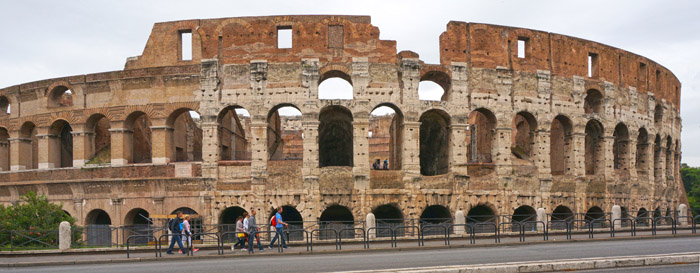
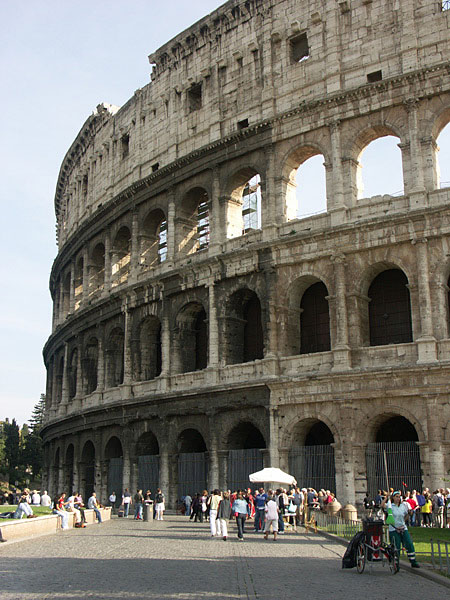
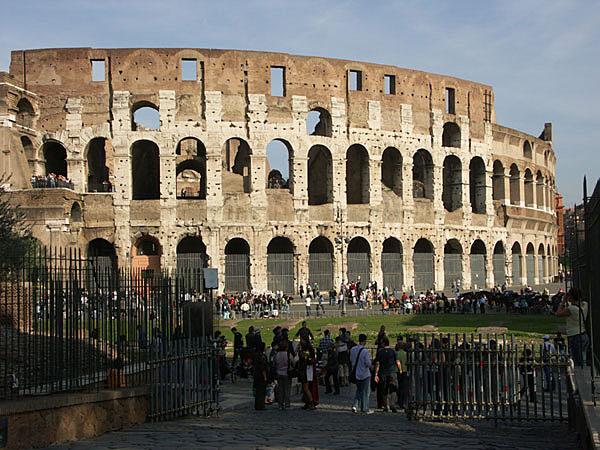
 |
The Colosseum of Rome
was originally known as the Amphitheatrum Flavium from Emperor Vespaian’s family name. Construction of the Colosseum was begun under
Vespasian in 72 and finished by his son Titus in the year 80. Further
modifications were made during the reign of Domitian. Emperor Vespasian was the first of the Flavian dynasty, it consisted of Vespasian (who reigned 69 – 79), his oldest son Titus (79 – 81) and his youngest son Domitian (81 – 96). Vespasian was one of the four emperors in the year 69 that fought for power after Emperor Nero had committed suicide. Vespasian commissioned the structure the Colosseum as a gift back to the Roman people and built it on lands that Nero had had taken. Nero had built a large palace complex centered upon the famous Golden House (Domus Aurea). The Colosseum was, adjacent to the Domus Aurea, in the area Nero had built his own artificial lake. It is of concrete and stone construction and was the largest amphitheater of the Roman Empire. Its capacity was over 50,000 persons and it was designed for easy access with 80 arched, ground floor entrances. Its construction was copies in over 200 other amphitheaters around the Roman Empire. The last recorded beast show at the Colosseum was during reign of Theodoric who died in 526. |
 |
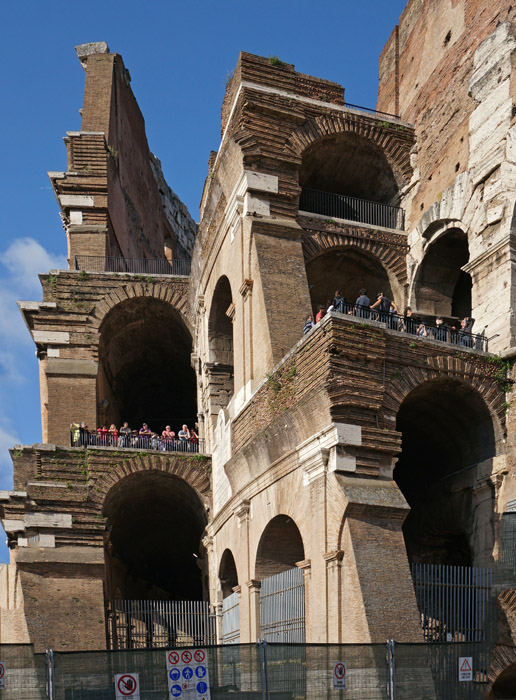
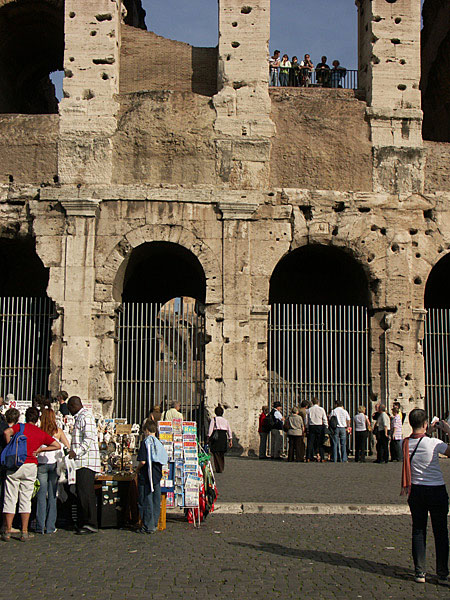
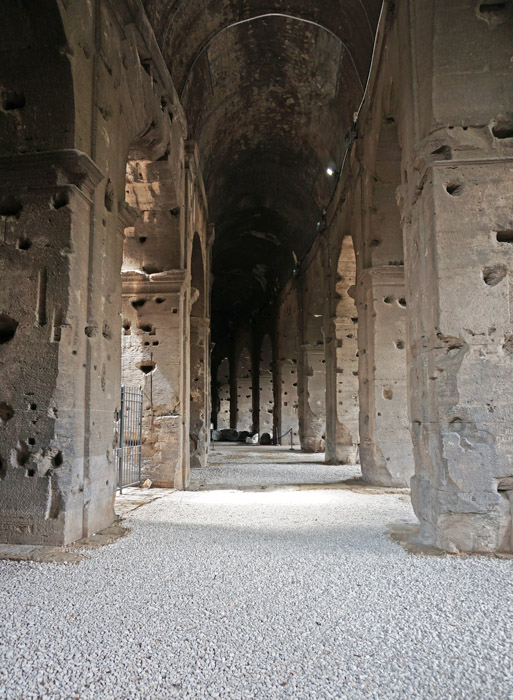
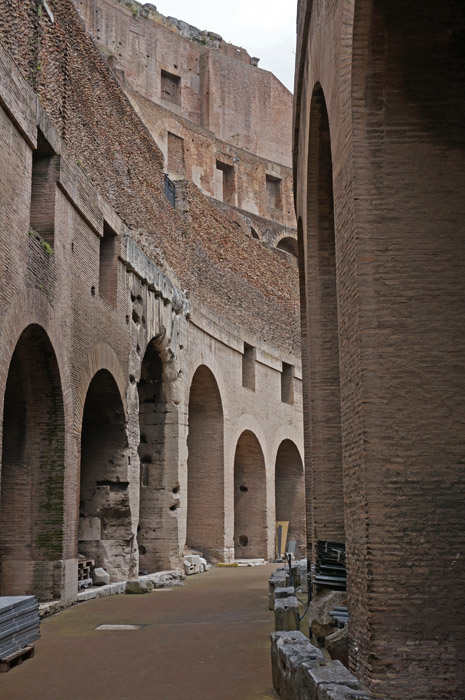
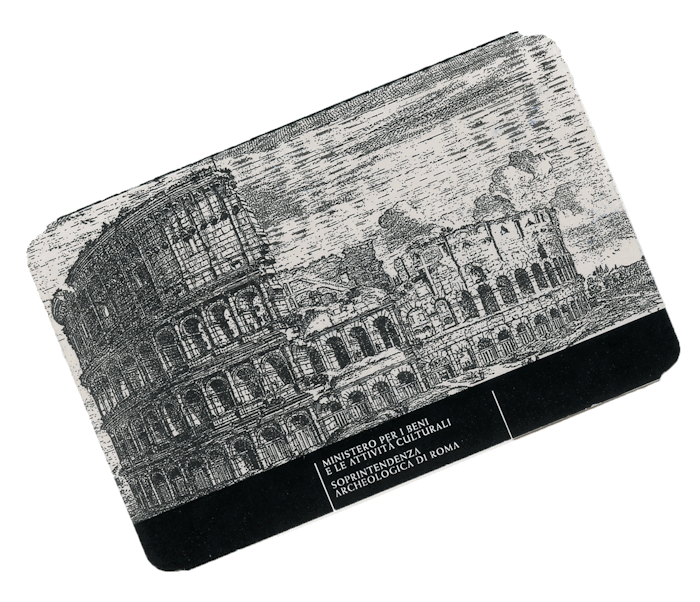
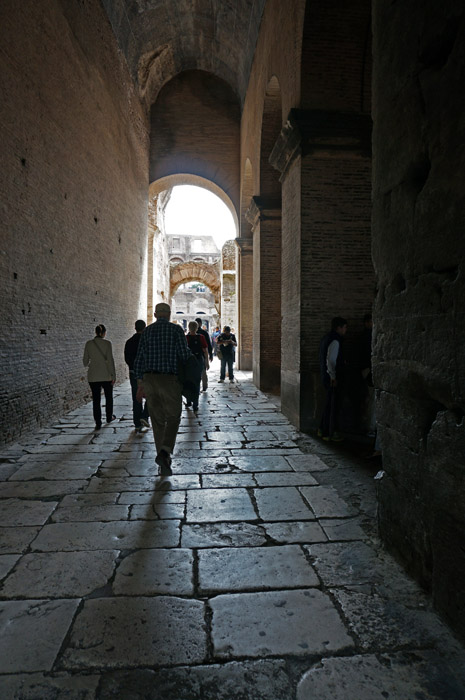
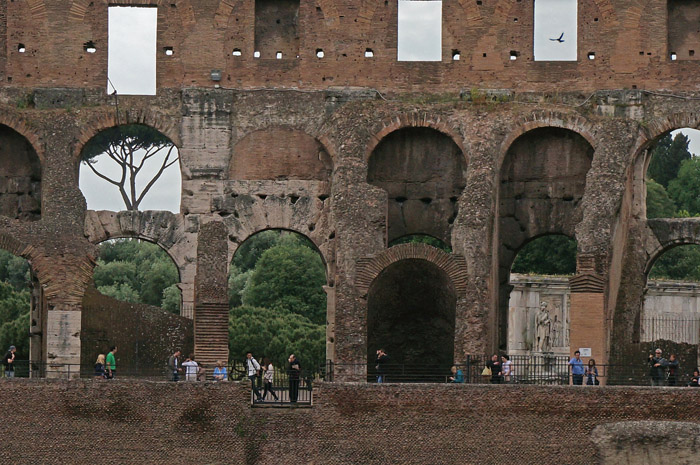
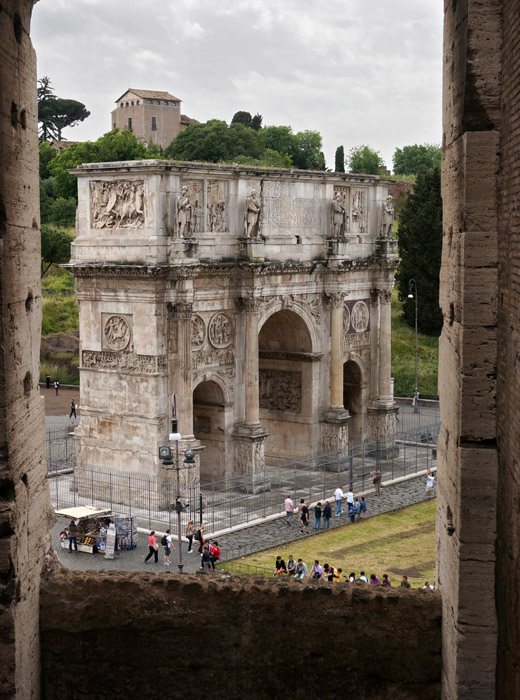
The Arch of Constantine as seen from the Colosseum

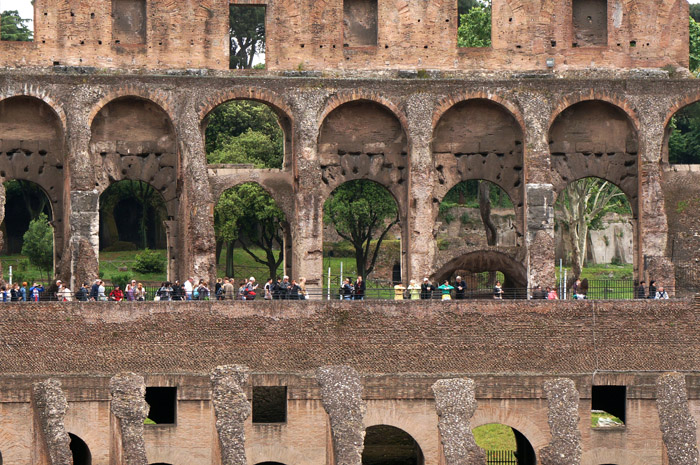
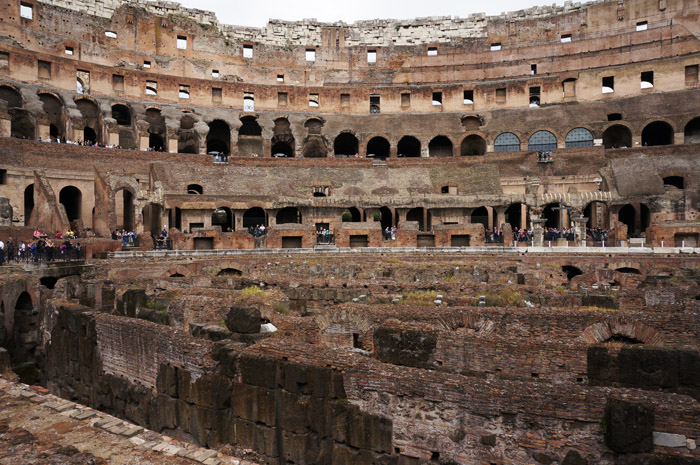
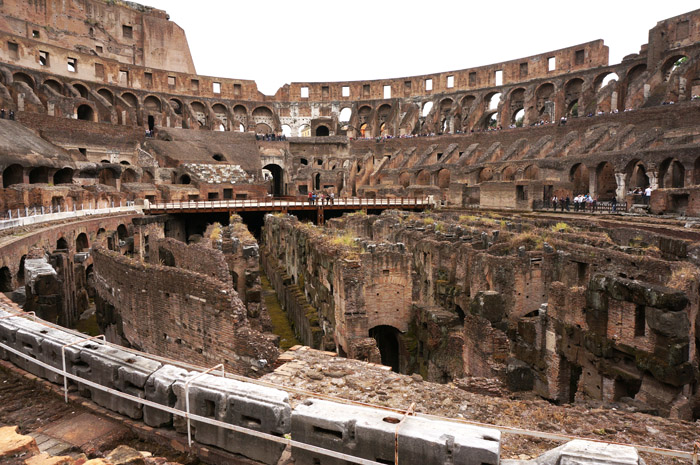
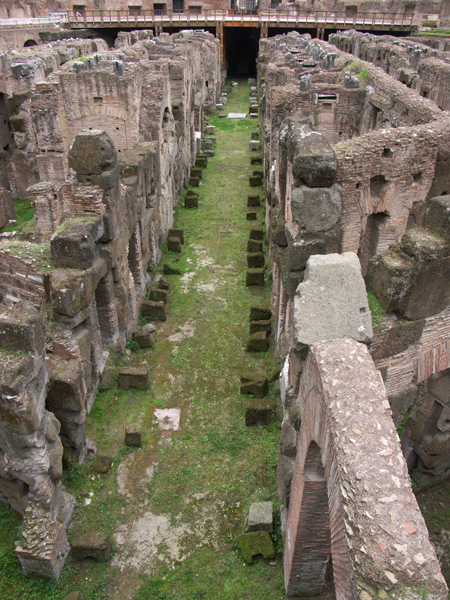
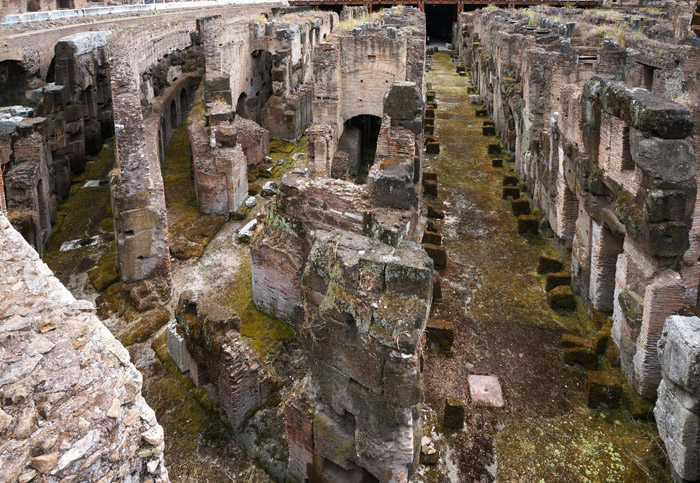
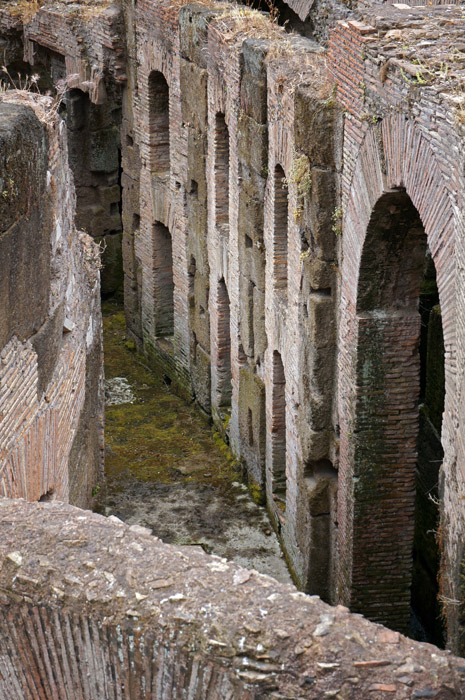
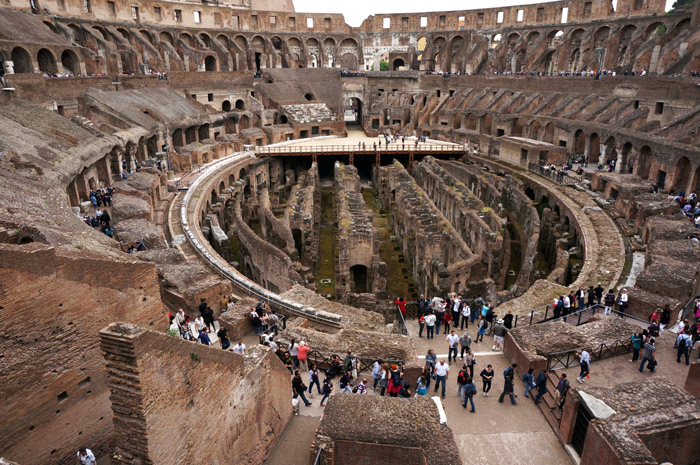
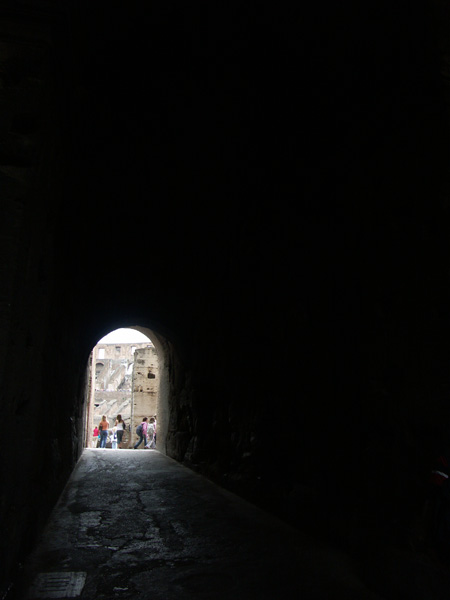
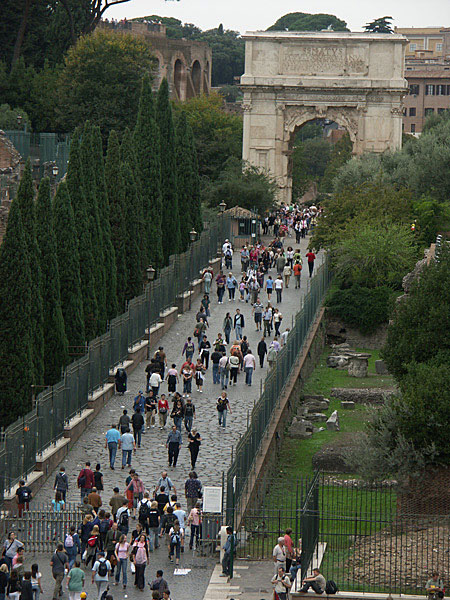
Arch of Titus as seen form the Colosseum
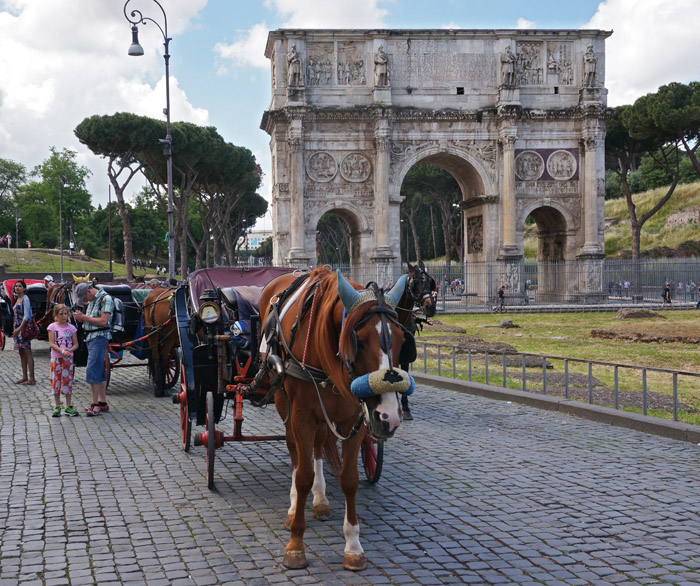
The Arch of Constantine, completed in 315 AD, was erected by order of the Roman Senate to recognize Constantine's victory over Maxentius at the year 312 Battle of the Milvian Beidge.
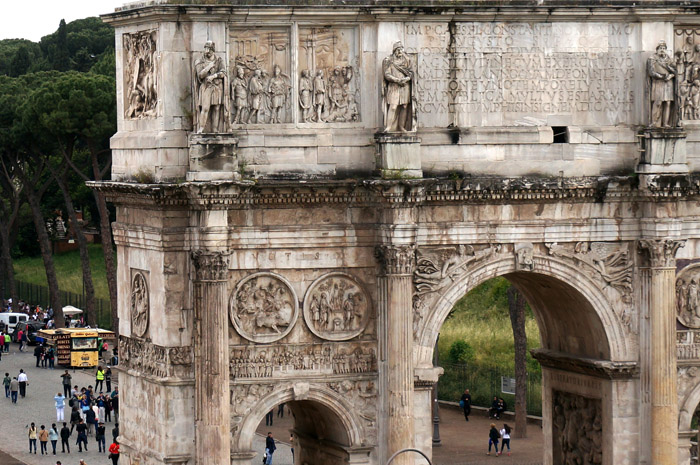
The arch is 21 meters high and incorporates reused sculptures from earlier Hadrian, Trajan, and Marcus Aurelius monuments. Those sculptures were reworked to change emperor face representation to those of Constantine.
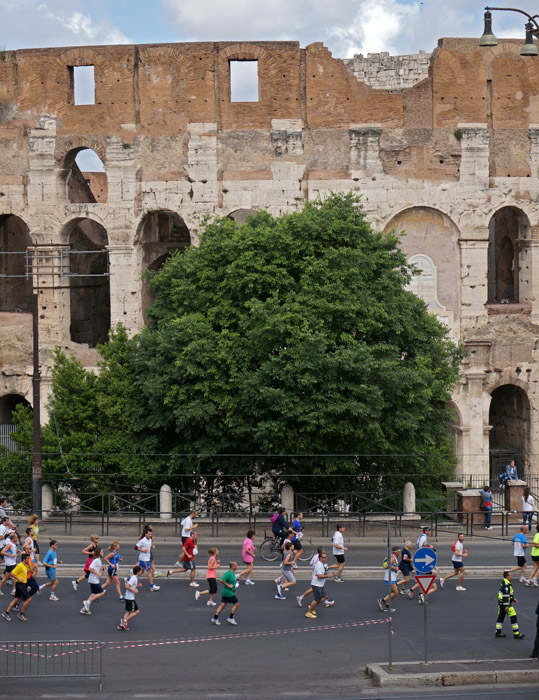
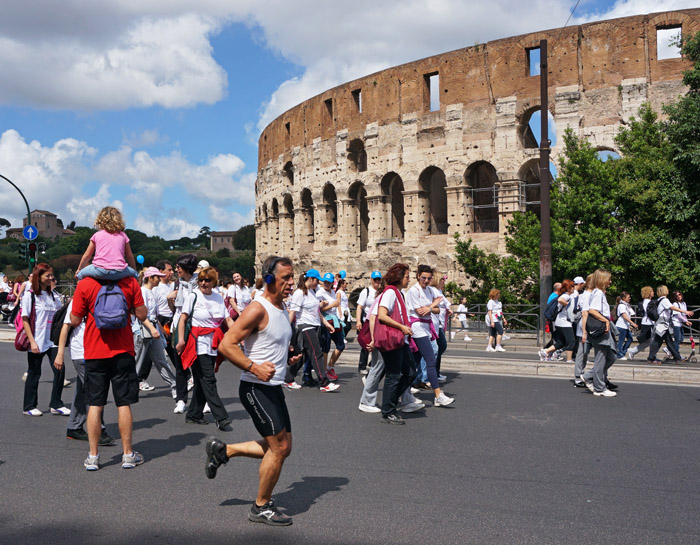
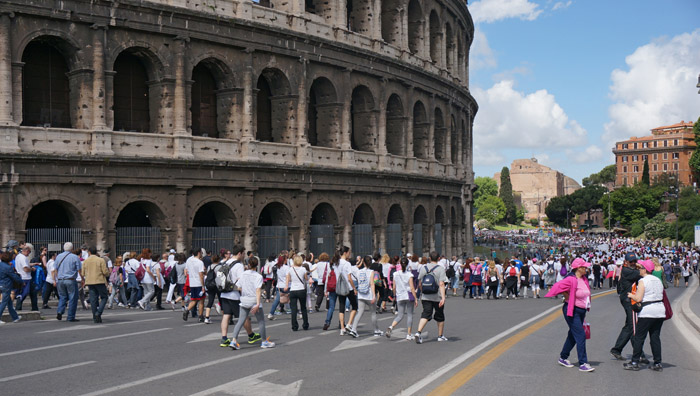
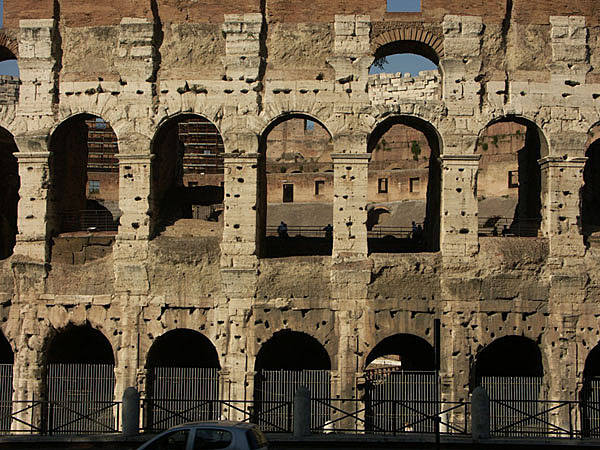
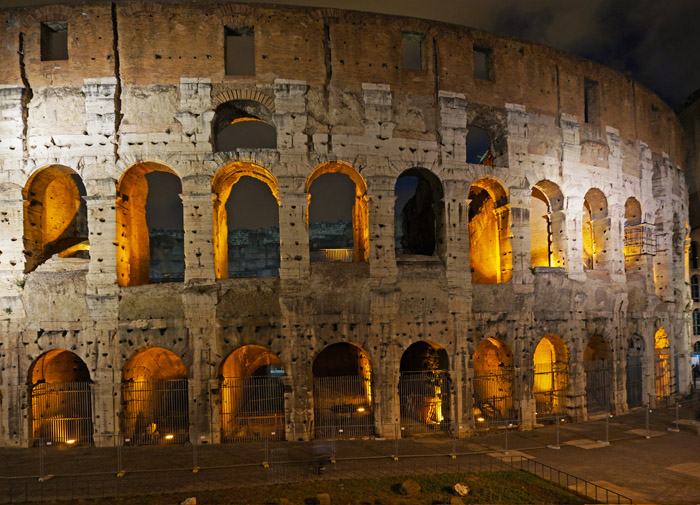
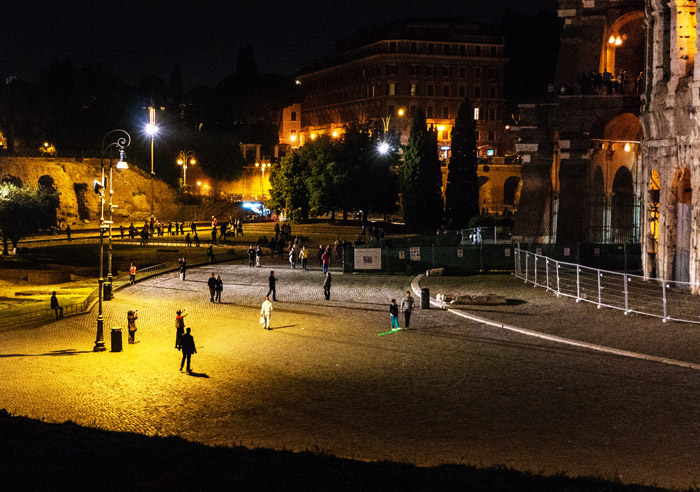
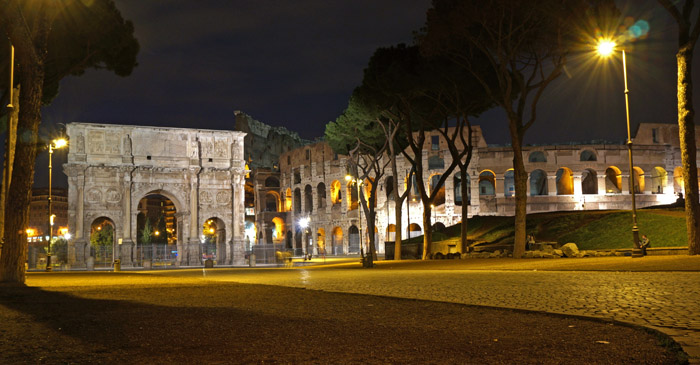
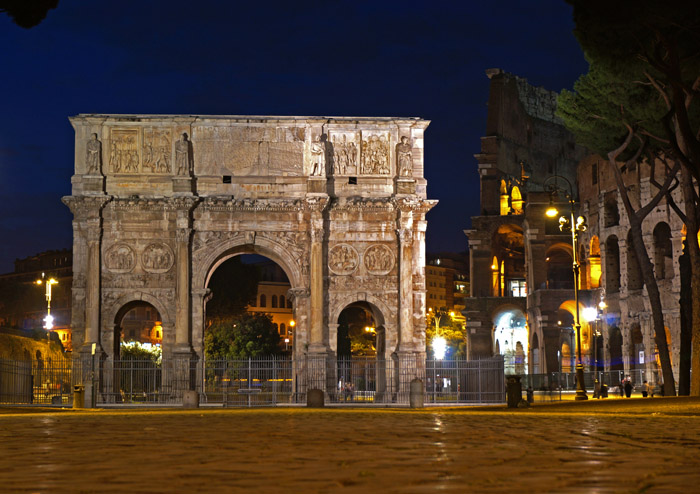
Above, looking towards the Forum - below, looking away from the Forum
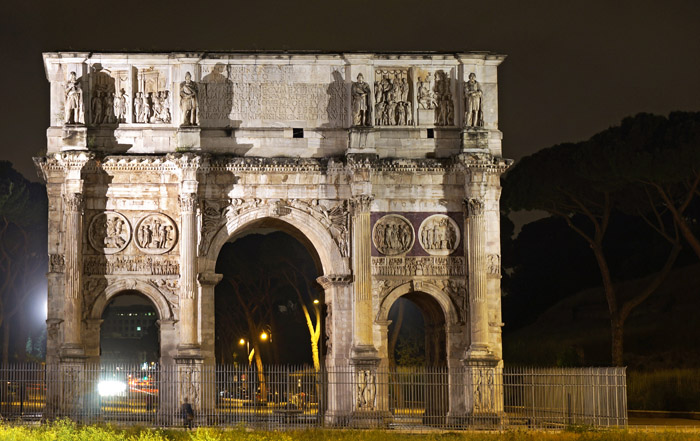
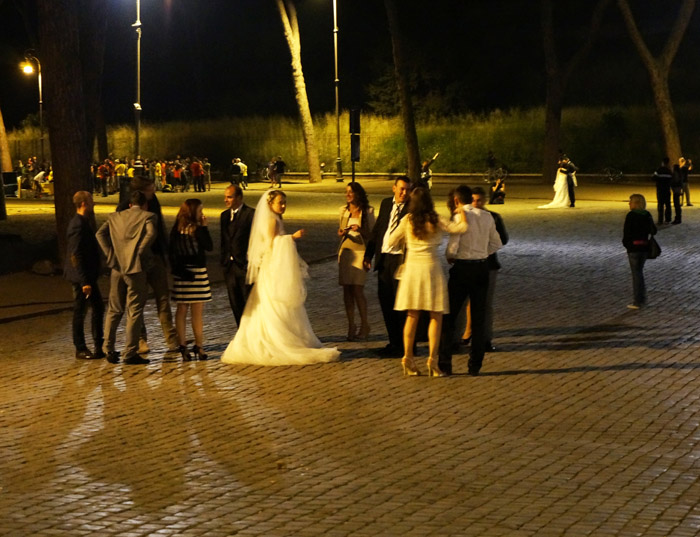
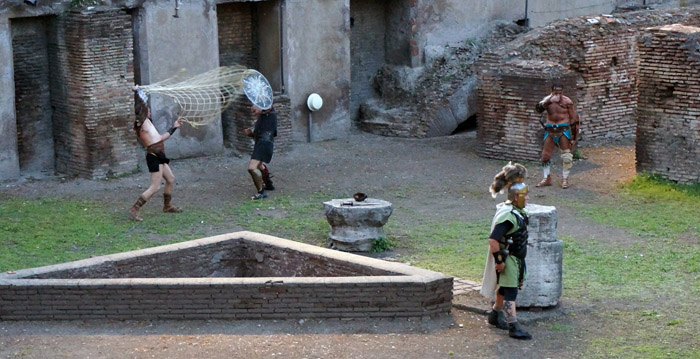
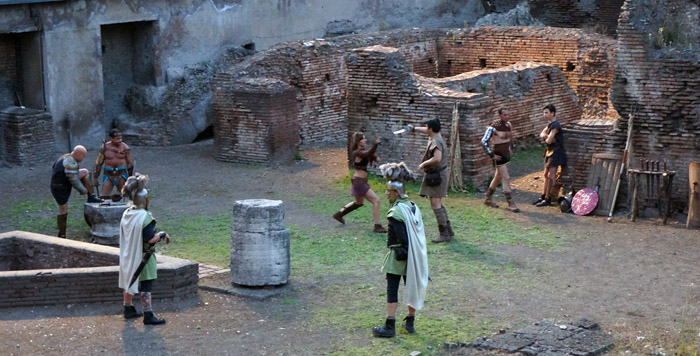
Pictures by Tom Aprille ( tomaprille@quartomese.com )